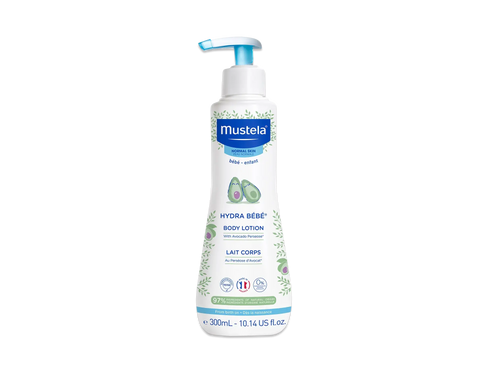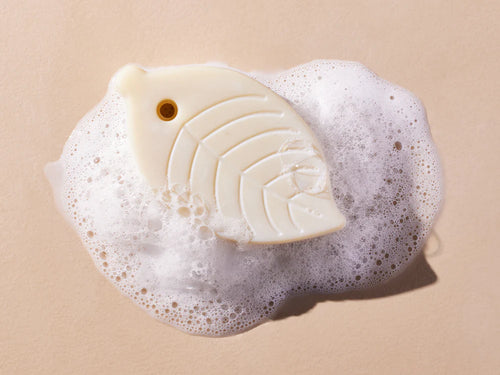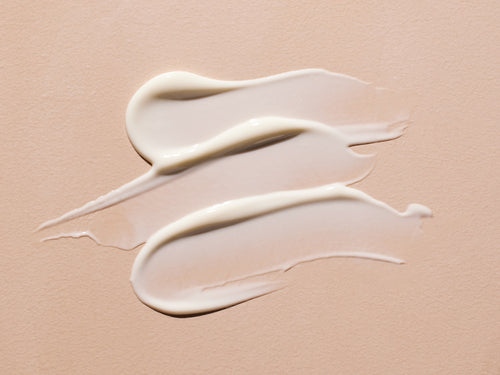When your baby doesn’t sleep well, you don’t either. If you’re rocking your little one in the wee hours of the morning, bleary-eyed and searching for tips on how to get your baby to sleep, you’re not alone!
It’s not unusual for little ones to have difficulty falling asleep and staying asleep — this is a common parenting complaint. But that doesn’t mean you have to resign yourself to sleepless nights or bounce your baby for 45 minutes every time you put them in bed.
No matter how old your little one is, Mustela has several tips to help you get them to sleep.
Sleep Trouble At Different Ages
Babies have trouble sleeping at different ages for different reasons, though the result is the same for you: exhaustion, frustration, and excess amounts of caffeine to make it through the day.
Newborns need to eat every couple of hours, which is one reason they’ll wake you during the night. Another reason that they don’t seem to respect your need for nighttime sleep is that they don’t have a sleep schedule yet.
Newborn babies’ bodies haven’t yet adjusted to sleeping during the night and being awake during the day. While those first few weeks are tiring, don’t despair! With time (and the tips below), your little one will soon begin sleeping longer at night.

Even after you’ve survived the sleepless newborn phase, you might find that your little one is in the throes of a sleep regression. This is when your baby was sleeping well and suddenly has trouble falling asleep and staying asleep.
While every baby won’t go through each regression, sleep regression can rear its head at four months, six months, eight to ten months, twelve months, eighteen months, and two years. Just like newborn sleep woes, sleep regression is also temporary, though extremely frustrating.
All of that being said, regardless of how old your little one is, there are several things you can do to get your baby to sleep and help them learn to stay asleep during the night.
How To Get Baby To Sleep: 10 Tips And Tricks

1) Keep Days Bright And Nights Dark
We already mentioned that newborns will need a little help differentiating between night and day. Slowly but surely, they’ll learn that nighttime is for sleeping and daytime is for being awake, playing, and eating.
To help your newborn adjust from the womb to the real world, keep the daytime bright and the nighttime dark. Dimming the lights before bedtime signals to your baby’s body that it’s time to wind down and prepare for sleep.
Dim the lights in your house up to two hours before bedtime, and avoid turning the lights on when your baby wakes in the middle of the night. And if your little one goes to bed before the sun sets, install blackout curtains in the nursery.
During the day, open the curtains to let in natural sunlight. Going outside is also a good way to soak in the daylight.
Expert tip: If you take your little one outside for playtime or a stroll in the park, protect their delicate skin from the sun with sunscreen and the right clothes.
Also, keep Cicastela Moisture Recovery Cream in your diaper bag in case of bug bites, scrapes, or scratches.
2) Look For Sleep Cues
If you let your baby get really tired before putting them down, they’ll fall asleep more easily, right? Not necessarily.
You don’t want to put your little one to sleep before they’re ready, but you also don’t want to wait for them to get overtired. Instead, look for signs that they’re sleepy and ready to hit the sack: yawning, acting fussy, or rubbing their eyes or head.
When you begin noticing some of these signs, it’s time to put your little one to sleep. If your baby is full-on crying, they’re probably already overtired and could have trouble falling asleep.
3) Swaddle Your Newborn
For the first few weeks of your newborn’s life, wrapping them in a swaddle at bedtime and naptime can make them feel safe and secure and help them fall asleep. Being wrapped calms their startle reflex, allowing them to sleep more soundly.
Just remember to stop swaddling as soon as your baby shows signs of starting to roll over (or around two months old).
4) Create A Bedtime Routine
The truth is it’s never too early to get into a bedtime routine (and a naptime routine, for that matter!). Doing the same calming activities every time you put your baby down will help them realize it’s time to go to sleep.
What should a bedtime routine include? That’s up to you! As long as it’s calming, do what works best for your family.
Consider bathing your little one, putting pajamas on, reading a book, and then, lastly, telling a story or singing a song.
If a bath is part of your wind-down routine, use products that are gentle and won’t irritate your baby’s delicate skin. Between Foam Shampoo for Newborns, Bath Oil, and Multi-Sensory Bubble Bath, Mustela has something to make bath time enjoyable and soothing for every age and every skin type.
5) Give Your Baby A Massage
A baby massage helps your baby relax before bedtime and get to sleep with less fuss! Not sure how to go about it? Check out our article here.
To get the most out of the massage, use Mustela’s Baby Oil to moisturize your little one’s skin and help them relax at the same time. Or massage their chest with our Soothing Chest Rub.
Bonus: Take a deep breath and enjoy the refreshing scents of pine and rosemary yourself!
6) Use A White Noise Machine
Turn on white noise when you put your baby to sleep. This soothing hum drowns out the loud neighbors, noisy cars, and your barking dog, helping your baby get to sleep and stay asleep!
7) Bounce Your Baby

Having a rocking chair in your nursery isn’t just for looks. Rocking, swaying, and bouncing motions help little ones fall asleep.
Play around with different variations of the baby-bounce to see what lulls your little one to sleep. Try rocking, walking briskly, standing and bouncing up and down, swaying, sitting and bouncing on an exercise ball, or any other baby-bounce you can think of.
8) Put Your Baby To Sleep With A Pacifier
Giving your baby a pacifier when they go to bed can soothe them to sleep. Plus, according to the American Academy of Pediatrics, snoozing with a pacifier promotes safe sleep.
9) Keep The Nursery Cool
Of course, you don’t want to freeze your little one out, but do try to keep the nursery on the cool side — somewhere between 68 and 72 degrees Fahrenheit is good.
On a similar note, don’t dress them in pajamas that are too warm. At nighttime, they should typically wear one layer more than you, including their swaddle or sleep sack.
Try dressing your little one in comfortable, soothing pajamas, like Mustela’s Stelatopia Skin Soothing Pajamas. Perfect for babies with eczema-prone skin, these 100% cotton pajamas deliver soothing moisture to their skin throughout the night.
10) Put Your Baby In the Crib Drowsy
When you’re running on fumes and desperate to get baby to sleep, it might seem like a good idea to wait until they’re asleep in your arms and then ever-so-carefully lay them in their crib.
This might work in the short term, but your little one may come to rely on being in your arms (or being rocked or taking a bottle) to fall asleep, and they won’t learn to soothe themselves to sleep.
Instead of waiting until they’re out like a light, put your baby in the crib when they’re drowsy. This helps them learn to fall asleep on their own and put themselves back to sleep when they wake up in the middle of the night.
Restful Nights For A Happy, Healthy Family

Learning how to get your baby to sleep might take some time. Every baby is different, and you’ll have to figure out what works for yours.
To do so, keep our tips in mind so both you and your baby can get some much-needed rest! Stock up on comfy pajamas and safe, soothing baby products like baby oil and Mustela’s Soothing Chest Rub.
Soon, you and your family will be enjoying restful nights and happy, energized days!














